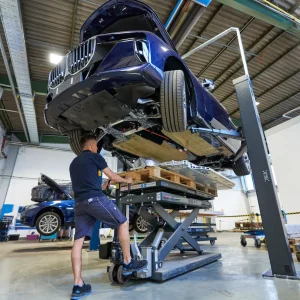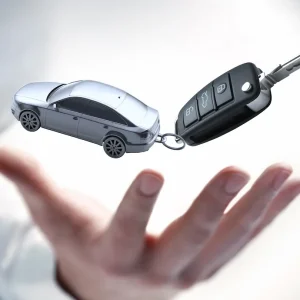Telematics systems can improve productivity and cut costs, as well as keep drivers safe. Steve Banner reports
Messaging
Tracking systems are frequently linked with a messaging service accessed via an in-cab unit that enables drivers and operators to communicate with each other. It may incorporate a selection of standardised messages the driver can send – ‘customer out’, for instance – plus the ability to add some text giving a fuller explanation of what’s happening.
“Something else you can opt to do as part of our VMI Greenlight package is programme it with five phone numbers linked to buttons one through to five,” says Minorplanet’s Payne. If the driver hits number one, for instance, he will always be put through to the office, while if he hits number two he will ring the phone number of his next drop point.
“That number will automatically change as he makes his deliveries during the course of the day and you can have either a soft on-screen dial-up or a hard button dial-up,” he says.
Programmed remotely, the system prevents the driver from calling any number he fancies and restricts incoming calls. Usually only the office will be able to contact him. An emergency button will be fitted that he can hit if he’s under attack.
Among the businesses that have signed up to VMI Greenlight is property maintenance specialist Gentoo Group. The Sunderland-based firm uses it to control all 345 of its vehicles.
“By constantly monitoring usage we can instantly move underused vehicles to locations where they can be used more effectively,” says transport manager Ian Bell. “This brings about a significant reduction in the number we have to purchase or lease and that in turn drives down the cost of fuel, servicing and other transport-related expenses.”
“Looking at utilisation levels is vital in the current financial climate,” agrees John Wisdom, group sales and marketing director at Cybit. Its Fleetstar-Online tracking system is now being used by the power services division of Enterprise to track its entire light commercial fleet. Enterprise engineers maintain overhead power lines and substations nationwide for utilities such as Scottish Power and EDF Energy.
Analysis
The data gleaned from a tracking system can be used as a planning tool. Careful analysis may indicate that with a bit of reorganisation you can handle the volume of goods you are currently delivering with a dozen 3.5-tonners with 10 instead. Do so and you can save the running costs of two vans and the wages of two drivers.
You may be able to save yourself lots of time and cut your fuel bills simply by persuading half-a-dozen big city customers to accept deliveries at 10.00am when the rush hour has died down, rather than at 8.30am when it’s in full swing. That way your driver won’t spend so much time stuck in traffic, wasting diesel.
Further analysis might reveal that schedules can be re-jigged to allow drivers to make one or two more calls daily without being obliged to speed and without experiencing undue stress. Over the course of a year that will spell a major increase in productivity.
If you’ve only a handful of vans you’ll probably be able to figure out the changes you need to make yourself. A big fleet, however, is likely to need some routing and scheduling software to crunch the numbers. It’s also likely to need somebody who knows the business well enough to spot when the software has come up with a suggestion that is perfectly logical in theory, but completely ridiculous in practice.
Installation
One of the advantages of tracking is that it can be used to prove that a driver was at a particular destination when he said he was. That’s true, says V-SOL’s Isom, but only up to a point. Its dependability falls apart if the van operator has specified a cheap and nasty antenna and if the whole system has been badly installed in his vehicles, he warns.
If that’s the case you may not be able to depend on what the system is telling you.
“Remember that you’re relying on a satellite signal that’s one-thousandth the strength of a television signal and needs a direct line of sight,” he says. Not only will the system be inaccurate. It may decide not to work at all.
“I well remember when we fitted 130 cheap antennae for a customer and they all failed in the end,” he says. “It cost me several thousand pounds to replace them all.”
It’s something worth bearing in mind when investing in a telematics system, particularly when in this day and age of low operating margins some sort of system is almost becoming de rigeur.





